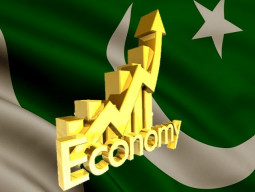
Speaking on the issue of public debt at a seminar on Wednesday, the minister feared that the debt level would further increase to 74% of gross domestic product (GDP) by June 2019.
She stressed the need for immediately following a fiscal consolidation path by restricting expenditures and enforcing a radical plan for domestic revenue mobilisation.
The public debt of Rs24.5 trillion included domestic debt of Rs16.5 trillion and external debt of Rs8 trillion.
Finance minister shocked at lack of progress on SEZs
“To manage the debt level, Pakistan has to have a strategy to combat low domestic resource mobilisation and go after tax evaders,” she said and added weak economic management was the key reason behind such a high debt level.
She also criticised the last government’s exchange rate policy, saying “we were as if in a pseudo fixed exchange rate regime.”
“In future, we need to have effective and sensible economic management, if we want to overcome economic problems,” she said.
Last time, Pakistan’s public debt-to-GDP ratio was 75% in 2013 and since then it had been on a downward trajectory before picking up again. The PPP government had left the debt-to-GDP ratio at 64%.
But during five-year rule of the PML-N government, the public debt increased Rs10.1 trillion, 70% higher than the level in 2013.
Akhtar said the biggest challenge for the next government would be to put in place a fiscal consolidation plan by setting low fiscal deficit targets. The unsustainable deficit led to the accumulation of public debt, which was no more sustainable, she added.
The minister said few years ago the country had made a wise decision by enacting the Fiscal Responsibility and Debt Limitation (FRDL) Act of 2005. “But in the last five years, some amendments were made in the Act and today the debt-to-GDP ratio has increased to 72%.”
Former finance minister Ishaq Dar had twice amended the Act in order to conceal the worsening debt situation.
Wealthy people seek just 2% tax on hidden assets
“Now there is a question as to whether the (projected) 74% debt-to-GDP ratio is adequate for a country like Pakistan,” she said, while highlighting the grave problem in a diplomatic manner to avoid political backlash.
She emphasised that Pakistan needed to have a forward-looking debt management strategy, adding both fiscal and current account deficits were unsustainable at their current levels, which led to the unsustainable debt level.
Against the target of 4.1%, the budget deficit is expected to remain above 7% of GDP in the last year of the PML-N government (2017-18).
The minister said the last government’s desire to increase the investment-to-GDP ratio also led to a rise in the debt burden. Pakistan’s investment rate had historically remained very low, but the investment could have been increased in a more prudent manner, she said, adding the pace and sequencing of the investment had to be looked before making these decisions.
Akhtar said Pakistan’s biggest problem was very low resource mobilisation. She said it was hard to contain expenditures and the only way to tackle the debt was to enhance the revenues. The tax-to-GDP ratio is the lowest in Pakistan compared to its peers.
World Bank sees Pakistan’s economy slowing next year
The minister cautioned that managing the interest rate and exchange rate would be a challenge for the new government as both had a direct bearing on the country’s debt level.
She said higher interest rates would further complicate the debt problem, suggesting interest rates would further go up due to global and domestic economic conditions.
The public debt showed average annual growth of 11.3% from 2013 to May 2018, said Ehtisham Rashid, Director General of Debt Office at the Ministry of Finance.
He said debt mainly increased due to the fiscal deficit, IMF loans, balance of payments requirement and rupee depreciation.
The DG said average maturity time of public debt had come down from 4.5 years in 2013 to 3.7 years in 2017. The indicator of debt maturing in one year also deteriorated in recent years and now 44.4% of the total debt was maturing within one year.
He said if interest rates increased 1%, the debt servicing cost would shoot up Rs100 billion. “A one-rupee depreciation will push external public debt up by Rs70 billion and increase its servicing cost by Rs8 billion,” he added.
The recent 15% depreciation of the rupee against the US dollar has added Rs1.19 trillion to the public debt. Had there been no depreciation, the debt-to-GDP ratio would have been 68.5% by June 2018, he remarked.
The DG said increasing balance of payments requirements were leading to a situation where Pakistan would have to keep relying on Eurobond and foreign commercial loans.
Published in The Express Tribune, July 12th, 2018.
Like Business on Facebook, follow @TribuneBiz on Twitter to stay informed and join in the conversation.















1736844405-0/Express-Tribune-(2)1736844405-0-270x192.webp)







COMMENTS (3)
Comments are moderated and generally will be posted if they are on-topic and not abusive.
For more information, please see our Comments FAQ